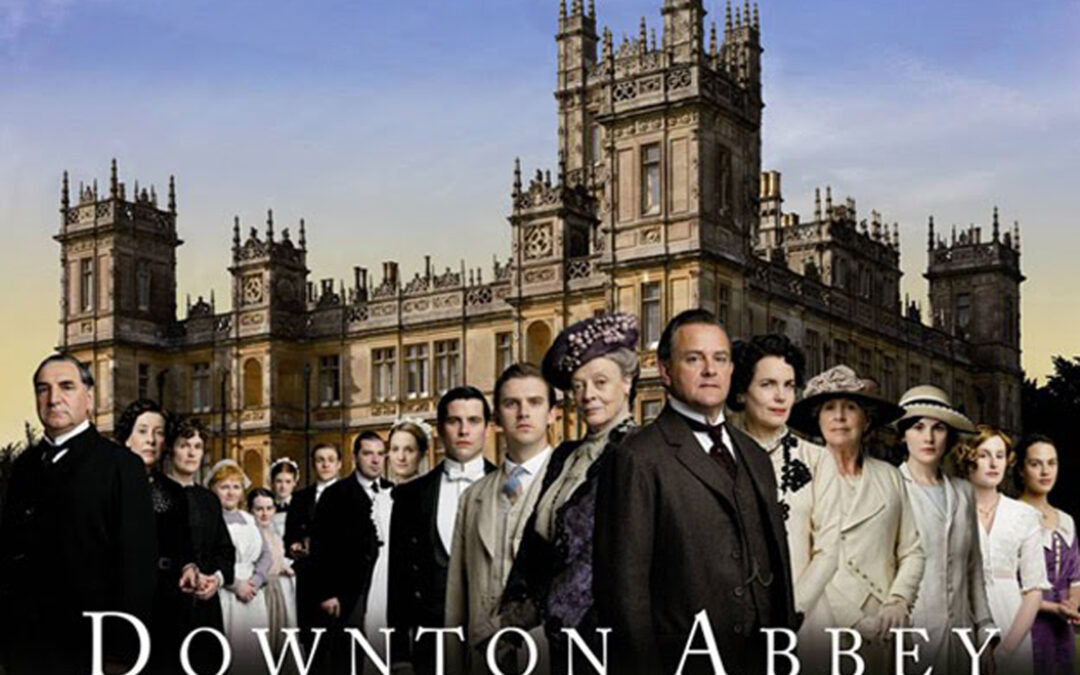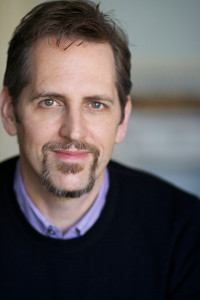What most interests me about Downton Abbey is how it so masterfully demonstrates two qualities that I am obsessed with, when it comes to good writing and good serialized TV writing, especially.
1. It makes us care about the people. God, does it make us care! To me, this is a writer’s most important responsibility and challenge – to get the audience to emotionally invest in its characters, so that it any given story, they can experience it “as” a particular person. The traditional way to achieve this is to (a) make characters sympathetic or likable in some way, and/or (b) give them problems so big, relatable and important to them, that you can’t help but feel for them as they face them. You put yourself in their shoes, to some extent, and begin to feel what they feel as they deal with the difficulties, frustrations and crises of their lives.
How Downton Abbey handles the “likability” question is really fascinating to me. They have a handful of characters who can tend to play the “bad guy” role from episode to episode, but even with them, the show also generally finds ways to highlight their humanity from time to time, and makes you sympathize with what they’re going through. And that’s what strikes me most about this show: the humanity. It has so much heart, in presenting these really decent people who mostly try to do the right thing. It might be elevated soap opera, at its heart, but rather than only going for shock value with over-the-top plot developments brought about by evil scheming, it seems more interested in making us fall in love with virtually every character.
Julian Fellowes, the show’s creator and writer of every episode, has a way of turning his series regulars from hugely sympathetic to slightly less sympathetic from episode to episode, so one might play foil to another character we care about at one moment, then assume center stage as the person we’re connecting to most in the next. One of the most powerful examples of this, to me (SPOILER ALERT) was the moment in Season One when Lady Mary and Lady Edith both sabotaged each others’ love relationships within moments of each other. We balance feeling shocked at how each could hurt her own sister so purposefully with caring deeply about each of them as they suffer from it.
Somehow, we consistently get why each of their huge cast of characters feels the way they do, and we generally can’t dismiss anyone (with a few minor exceptions) as truly unredeemable, or the source of all the problems. Rather, the problems come from the complicated situations and agendas that the various people carry, which inevitably lead to personal conflicts — where we can understand and feel for multiple sides in the conflict.
It’s a stark example of how a successful series needs a robust ensemble of people who can “get stories” in any given episode. It usually doesn’t work to only have one or two such characters on a series, because eventually you run out of stories. This doesn’t seem like it will every be a problem on Downton Abbey, due to the size of the ensemble, and the compelling ongoing conflicts each member of it has.
This leads me to my other point:
(2) Despite the highly serialized nature of the series as a whole, each episode focuses on stories with a strong beginning, middle and end – which lead to clear climaxes and resolutions within that episode.
This is a common issue I see with original series ideas from writers who envision one long story playing out over multiple episodes and seasons. They often don’t put enough thought or attention into how a typical episode might work – how many “stories” it might have, and for which characters, and how such stories tend to begin, complicate, climax and resolve within an episode.
It’s my contention that even in the most serialized of shows, if you analyze any particular episode, you’ll note that the writers managed to still tell a somewhat “closed-ended” story (usually more than one story, for more than one character), where a “Catalyst” of some sort rocks their status quo in the early going, setting them up with a goal of some sort for that episode, which they set about trying to achieve from scene to scene. Usually their attempts to reach this fail and lead to complications, and a rising sense of urgency, importance and difficulty, throughout the episode. Ultimately some sort of “final battle” eventually resolves the issue.
If you really pick apart most good Downton episodes (like all great serialized shows), I think you’ll find this structure is there. They might have many stories in each episode, some of which only get the minimum of three scenes (setting up the problem, complicating it in some way, then resolving it) – but each one tends to have that clear “beginning, middle and end” within the episode, despite often being part of a larger serialized storyline that will lead to other “stories” in future episodes. In other words, some big problem (like Mary loving Matthew while he’s engaged to someone else) will take many episodes to resolve, but in any given episode, there might be a “story” related to that problem that has a clear beginning, middle and end.
For writers grappling with original series ideas, this is the biggest piece of advice I would give – focus on how a typical episode works, and how it would have stories which play out entirely within an episode (even if they are part of larger serialized arcs, as well). Oh — and really try to make us care about the people! 🙂


Erik: you are likely to enjoy the remaining seasons of Downtown Abbey, if you haven’t already seen them, since I notice this is an old posting. What struck me about the final seasons is that there is no huge backdrop of World War I to drive the issues, so the issues become “smaller.” But the writers still manage to make us care about the progress of each character as they negotiate the 1920s.
I have stayed with it and continue to enjoy it — though sometimes the smaller stakes of the stories do make me long for Seasons 1-3… 🙂
In my own efforts to follow your screenwriting guidance and create stories with stakes high enough, it’s possible to make the argument that Julian Fellowes has “pulled his punches” a bit, in terms of the intensity of the social changes in the 1918-1925 period. I would’ve recommended a bit of a “harder edge” to the issues of the day – economic upheavals, the downward spiral of the upper class, post-War psychological problems of returning soldiers, role of women, etc. It’s all handled a bit too “tamely” for my taste.
I think he’s trying to depict those changes while still focusing on “people we care about” who have their own personal challenges connected to those changes, which aren’t so bleak to watch that audiences would tune out. It’s always a fine line to walk, where you want to entertain and draw people in, and take them away to a world they enjoy going to — while also depicting the reality of a situation.
Well said and good advice.
Excellent article Erik and very true. Good, multi-layered characters make a series and without them you’re pretty much dead in the water. Also agree that each episode needs a sub plot with some closure even if the main story-line continues throughout the series. Thanks for some very good advice.
My pleasure and thanks for the kind words, George!
That’s so true Erik,a great post. What I also find interesting is how many men will admit to watching it.Considering it is elevated soap,not the kind of show that would expect to find a male audience. A lot of guys say they sat down to watch it with their partners etc and then got totally hooked.
:)Judith
I’m proud to admit it. I liked SEX AND THE CITY, too. 🙂
Erik, I think of Mad Men doing something similar to Downton Abbey in terms of likable characters. During that show’s first season, I often wondered why I found it so fascinating when I wasn’t particularly fond of any of its characters. After a while I realized it was the fact that each of them were textured enough so that I could occasionally root for them. No one on that show ever strays into totally disagreeable territory. For example, Don may live a lie that poisons all his relationships but he has a code of honor all his own & is not a back-stabber. Downton does this in a similar way. This allows flawed, sometimes disagreeable characters to win our sympathy enough to make us care about them. Still, let’s be honest: I want to hear a choice remark or two from Roger Sterling or the Dowager Countess every week; if I get that I’m good.
That’s a great point. Being tortured can make up for a lot of unsympathetic traits, in terms of making us want to follow a character. I always think the more unsympathetic they are, the bigger the problems they need to be facing and struggling with.